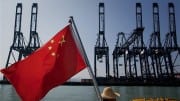Combustion is The New Cartographer’s guide to the present and future of the auto industry.
In the early 1980s Chinese leader Deng Xiaoping returned from visits to Japan and the US with a vision of China’s economic future. Seeing a connection between big car industries and economic prosperity, Deng laid out a strategy for transforming China from automotive pauper to automotive powerhouse:
1. Form joint ventures with American, German and Japanese carmakers.
2. Lock in Chinese control over the joint ventures.
3. Get the know-how to build our own high quality Chinese cars.
Thirty five years later, that master plan has come a long way, but is still incomplete. Yes, China has formed joint ventures with all of the world’s top foreign automakers. Yes, Chinese has kept tight control over the joint ventures. And, yes, Chinese brands already control the commercial bus and truck industry, taking more than 90% of sales.
Up until now, however, Chinese automakers have struggled to match the quality of cars made by the global majors. Foreign models produced in China still account for the majority of car sales. Drive the streets of Shanghai and you’ll be struck by the number of VWs, Buicks, Chevys, Hondas, Toyotas and Audis.
But change is afoot. Some foreign joint venture plants in China, like the Shanghai-GM factory that builds the Buick Envision, already have internal quality standards that are higher than some GM plants in the US. As Chinese automakers apply lessons learned at these joint venture factories to their domestic brands, the quality gap is closing and Chinese car buyers are shifting to home-grown brands.
To read entire article, please click here.
Source: Michael J. Dunne – GAI





